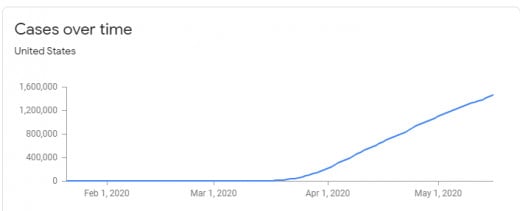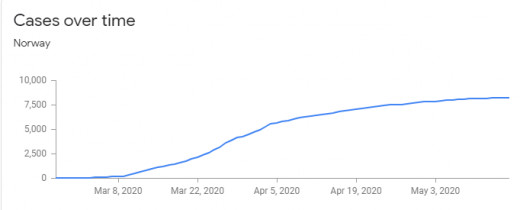Should We Really Reopen the American Economy?
The U.S. Economy and the Coronavirus Outbreak
Stay at home orders, distance learning, working from home, face masks, social distancing, and self isolation (quarantine); these are the important precautions requested by the government since March 2020 in order to stop the dreadful corona-virus pandemic. These orders are suppose to keep corona-virus from spreading exponentially among both human and animal species because they mitigate the virus exposure and reduce the rate of infection.
Yet, more and more cases of the corona-virus seem to be occurring each day, keeping the "COVID-19 curve" elevated, opposed to many other countries. Even though the government authorities are trying their best to decrease this pandemic situation, people are consistently ignoring and disregarding the government orders.
New Coronavirus Cases Day by Day in the USA



The graphs show the total coronavirus cases of three countries, the USA, Norway, and Australia, with their start dates in the caption. Even though the graph does not show the whole picture, the population density of each country, for the most part, the graphs show a mostly accurate representation of coronavirus cases in the country each day starting from the first cases.
USA Coronavirus Cases Compared with Other Countries' Coronavirus Cases
From the graph, we can interpret that both Norway and Australia are flattening out yet the USA's graph is not leveling out even though it was the first, out of the three countries, to have a coronavirus case. This implies that the USA is not doing as well a job as other countries in keeping the number of coronavirus cases lower. This is due to a variety of reasons such as inadequate masks/ventilators/coronavirus tests but also, there are some other preventable causes such as patients that were released even though they were tested positive.
Actions other countries have imposed that the USA has done late
The cause that other countries have already flatten the curve in about 2-3 months and the USA has not lowered the curve is because the USA actions are slower than other countries. For example, the USA has imposed self isolation since mid to late March, while other countries have been imposing self isolation since late February to early March. Also, most Americans are not obeying the self-isolation rules imposed by the government, but other countries have been fining citizens for not following self-isolation rules.
So, should the USA really repon?
From the statistics and data, the USA should not reopen because the coronavirus is still alive and rapid, it is not leveling. If the USA were to reopen, a second outbreak of the coronavirus would occur. This would lead to more inadequacy of supplies and would increase more self isolation. Therefore, to stop the coronavirus, officials should implement stricter laws in regards to social distancing in order to flatten the curve and then the states could consider to reopen. If the states would reopen right now, it would only be beneficial in the short term to the US economy but, it would deem to be worse in the long term because the coronavirus outbreak would be more rampant and lead to more days of social distance, which would make the economy more unstable. Conclusively, the US economy and the people would be much safer and reliable if the states would enforce stricter laws, stay closed, and reopen only when the coronavirus cases has flattened out.
Should the U.S. States reopen?
© 2020 Jay Bhatnagar








